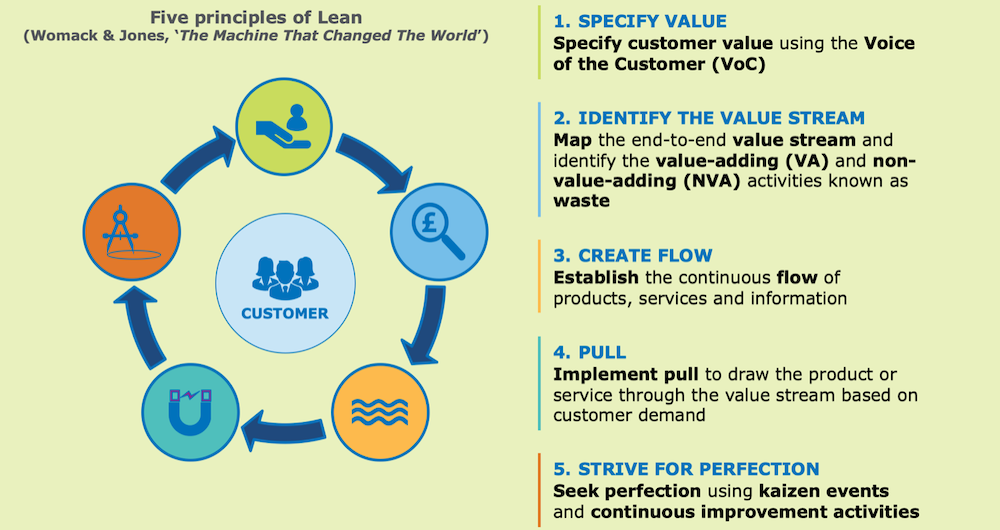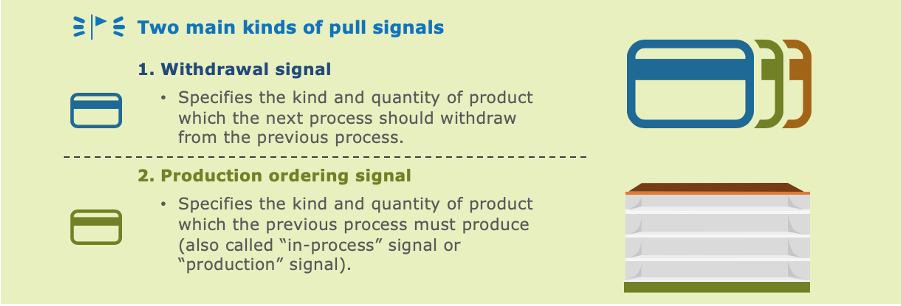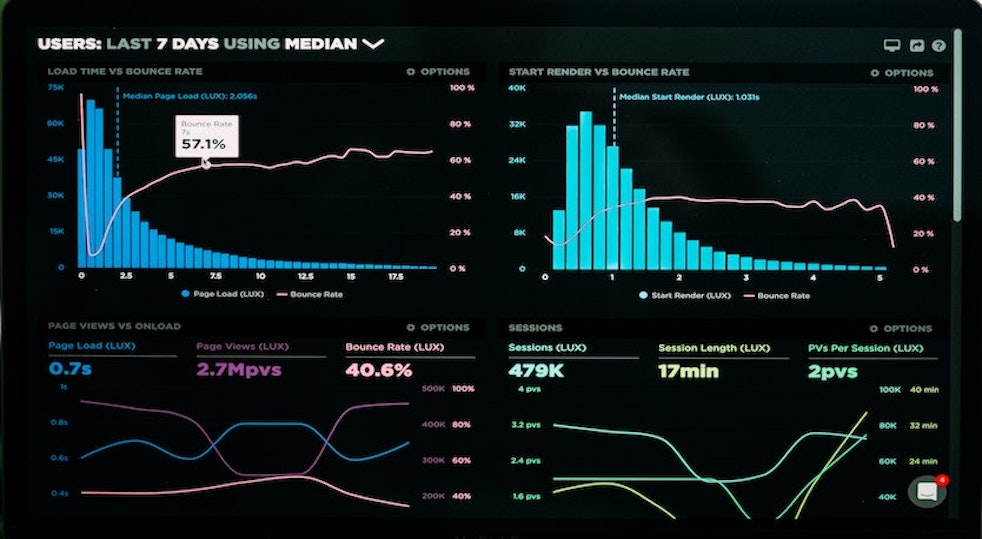To complement our series of QuickReads covering measurement, we will now explore the various data…

ChangeWise Quick Read: 5 Principles of Lean Part 4/5 Implement Pull
Following on from our previous Quick Reads where we looked at Lean Principles 1, 2 & 3; Specify Value, Identify the Value Stream and Create Flow, we are now ready to take a look at Principle 4: Implement Pull.

What is meant by Pull and what are the benefits?
In a Pull Process, each process step takes exactly what it needs (no more and no less) from the proceeding process only when it needs it. This is extremely important in reducing waste since no overproduction occurs and unnecessary inventory is avoided.
Pull systems are often preferred in situations where the cost of managing excess inventory out-weighs the benefit of having surplus products in stock. A great example of this is seen in supermarkets. They have a sophisticated system of signalling when stock should be replenished onto the shelves and when suppliers should produce more (we’ll talk more about this in a minute).
In simple terms (and we love keeping things nice and simple), pull is about matching supply with demand according to the rate the customer wants it. We call this rate ‘Takt Time’.
Takt Time
Takt Time is used to measure customer demand. It refers to the time between starting work on a widget and starting work on the next widget. Think of it as the heart-beat of the process based on the customer demand.

I think I might need an example to help me work out my takt time….
Sure. To work out your Takt Time, take your total available work time and divide it by customer demand:
For example:
- I have to make 10,000 widgets a month to meet customer demand
- My company has a 6-hour working day, 20 days a month
This equates to 120 hours a month which is 432,000 seconds

So, to meet customer demand, we need to produce one widget every 43.2 seconds.
⚠️ Important Point! If we were doing this in a live Lean operation, we would also consider the likelihood of timing delays due to operational issues, downtime, breaks, staff absence etc. So in reality, the Takt Time would be less than 43.2 seconds. Take a look at our Quick Read on Lean Time, Takt Time and Cycle Time if you’re getting a sense this is your sort of thing ☺️
Thanks, that’s really helpful….so what’s a Push System?
Not surprisingly, a Push System is the opposite of a Pull System: A company orders stock with the intention of selling it – they ‘push’ the stock onto the customer. An example of this would be airline seats; the aviation company charters a number of seats from London to Dubai without having obtained customers – they intend to sell the seats. The seats are allocated before the customer demand.
Ok, seems logical. So, how do I implement Pull?
There are four key steps when implementing a pull system:
- Step 1: Process only what the customer needs when they need it – then stop
- Step 2: Pull all products and services through the value stream synchronised to the drumbeat (Takt time) of real customer demand
- Step 3: If anywhere a step stops, then all preceding steps stop
- Step 4: All work steps must be completed within the Takt Time
Pull systems are control orientated and operate by receiving signals that more production is needed.
Search for ‘Pull System’ on the internet and you’ll likely see the word ‘Kanban’. Let’s take a minute to understand what this means as it plays a vital role in the Pull Process.
Kanban
Kanban is a visual management tool for any work that follows a process. It imposes limits on the length of time a work item can stay in a process step at any given time – we call these Work In Progress (WIP) limits. When a work item stays in a process step for too long, a visual cue is triggered to warn the team. These visual cues also tell us how much to produce and when.
There are two main types of pull signals:

A supermarket is an inventory at the end of a pull system that stores items sorted by their part types in a first-in-first-out sequence. Whenever a part leaves the supermarket, a signal for reproduction is sent back to the production system.
Although Kanban originates from manufacturing, it can be applied to many different organisations and sectors to improve processing, including maintenance and equipment, critical spares management, stationery replenishment, laboratory testing analysis, parts replenishment, production support, software development and several customer service operations.
In Summary
Implement Pull is the 4th Lean Principle. In a Pull Process, each process step takes exactly what it needs (no more and no less) from the proceeding process only when it needs it. This is extremely important in reducing waste, optimising cost efficiencies and meeting demand. A Push system will also ensure you are quickly made aware of any changes/issues to the process.
Have we got you interested? If you would like to know more about the benefits a Push Process could bring to your organisation, get in touch with the ChangeWise team at info@changewise.co.uk
ChangeWise believes employee engagement is the foundation for successful Change. Training and coaching your people to use simple continuous improvement techniques will enable your organisation to continuously adapt and stay ahead in a constantly changing and challenging environment.
For updates and interesting Lean Change insights, connect with us on LinkedIn.



